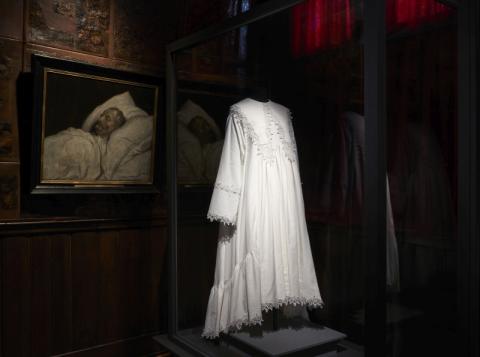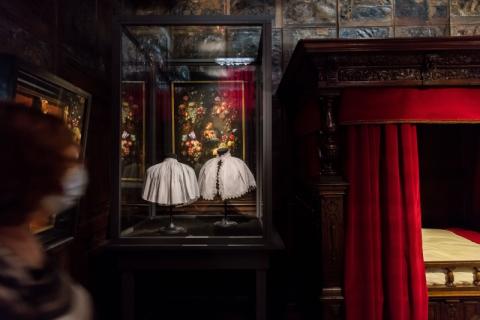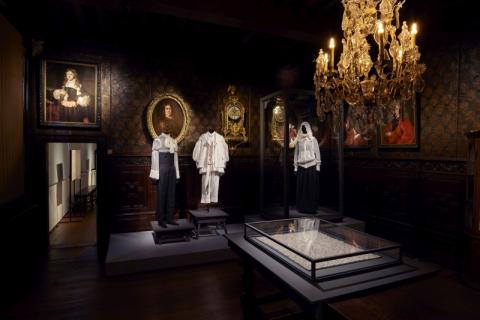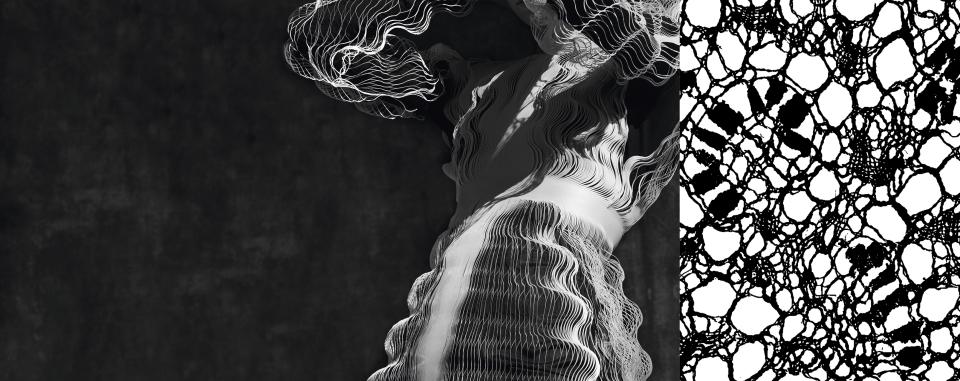With P.LACE.S, MoMu is starting a unique conversation between historical textile craft and contemporary fashion to look at our history from a different perspective. This creates a visual play between past and present, presenting objects from international collections that have never been shown in Belgium before.
From the mid-16th to the mid-18th centuries, Antwerp played a leading role in the creation and distribution of lace – without linking the city's name to a single type of lace. With an inspired commercial spirit, lace of varying quality was produced and traded for a diverse and international clientele. This ensured that Antwerp adapted to the specific needs of the export countries. The lack of branding – in contrast to Brussels, Bruges or Mechelen, for example – is one of the reasons why studies on lace usually make only passing mention of Antwerp.

photo: Stany Dederen
Antwerp's different laces in different places
With P.LACE.S, MoMu highlights the socio-economic and artistic importance of the lace that was long created and traded in Antwerp. By bringing together historical lace, paintings and archival documents from Europe and the US – Flemish lace features prominently in collections from The Metropolitan Museum of Art in New York to the Victoria & Albert Museum in London, the exhibition reveals how, for centuries, Flemish lace was a prominent presence in fashion, interioir design and religion. The role of girls and women in both the production and trade of lace is also given due attention. MoMu presents this rich history in dialogue with contemporary, often high-tech fashion creations that refer to lace in form or concept.

photo: Stany Dederen
The historical ‘places‘ where the exhibition in Antwerp is taking place have an – often less known – historical link with lace. In the Museum Plantin-Moretus, with one of the oldest archives in the world on the lace trade, and in the Snijders & Rockox House, the exhibition shows exceptional lace and contemporary fashion in historic interiors. In addition, SHOWstudio, the acclaimed digital platform of fashion photographer Nick Knight, created an artistic intervention at two exhibition locations at MoMu's request. SHOWstudio made a poetic film for the St Charles Borromeo Church, which boasts the most important collection of lace from the 17th and 18th centuries in Antwerp. At the Maiden's House (Maagdenhuis), where orphaned girls used to learn sewing and lace-making, both substantive and visual parallels were sought between historical and contemporary production techniques. At MoMu the exhibition illustrates the fashionable aspects of lace. Through an overview of different types of clothing and accessories, from shirts to hats, the visitor can explore exactly how lace was worn. Visitors will also discover how today's innovative designers are experimenting with transparency through high-tech 3D printing and laser cutting. This will give them a new perspective on designers and fashion houses such as Iris van Herpen, Azzedine Alaïa, Chanel, Prada and Louis Vuitton, which are using new techniques to explore the conceptual boundaries of lace.

photo: Dries Luyten
Catalogue
On the occasion of the exhibition the book P.LACE.S - Looking through Antwerp Lace is published by Lannoo.
€49, edition in English and Dutch, 256 pages, hardcover, ISBN 9789401474320
Practical
P.LACE.S - Looking through Antwerp Lace
- From September 25, 2021 until January 9, 2022
- MoMu - Fashion Museum Antwerp, Nationalestraat 28, 2000 Antwerp and 4 other locations (Museum Plantin-Moretus, Maiden's House, St Charles Borromeo Church en Snijders & Rockox House)
- You can visit the exhibition in Museum Plantin-Moretus during the opening hours of the museum. The MoMu will remain open for an hour longer (until 6 9.m.)
- Order your tickets online and visit the five locations.

photo: Stany Dederen

